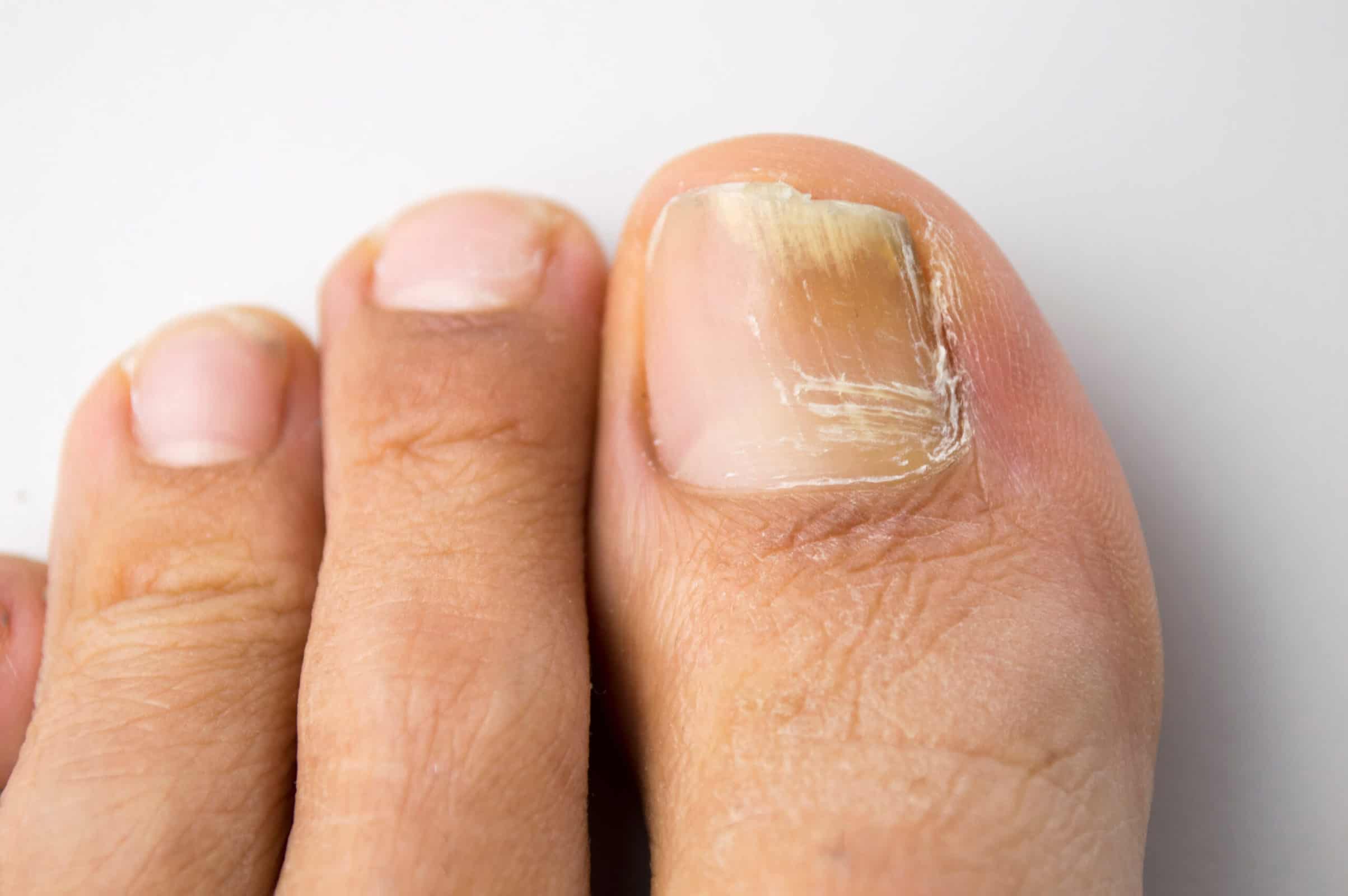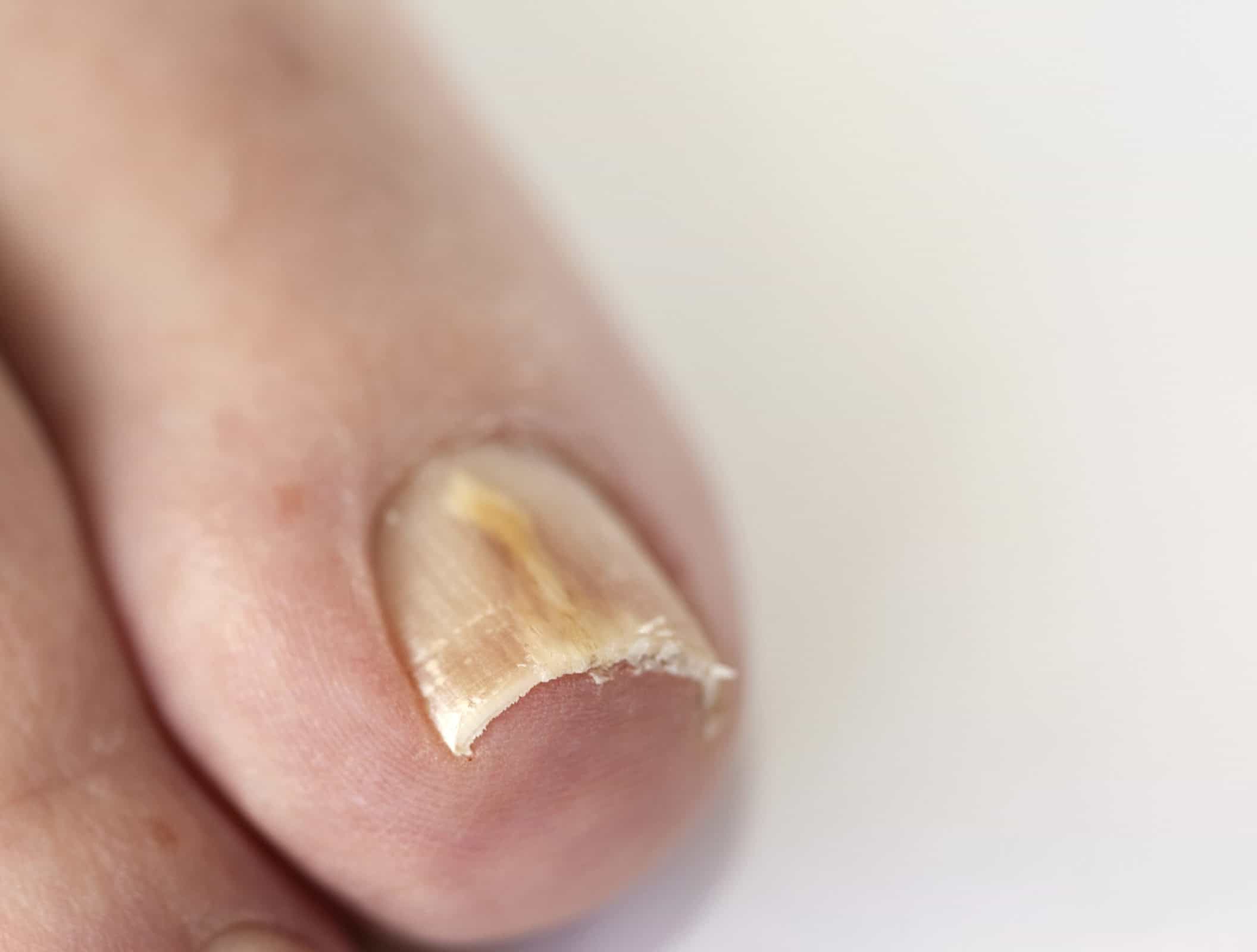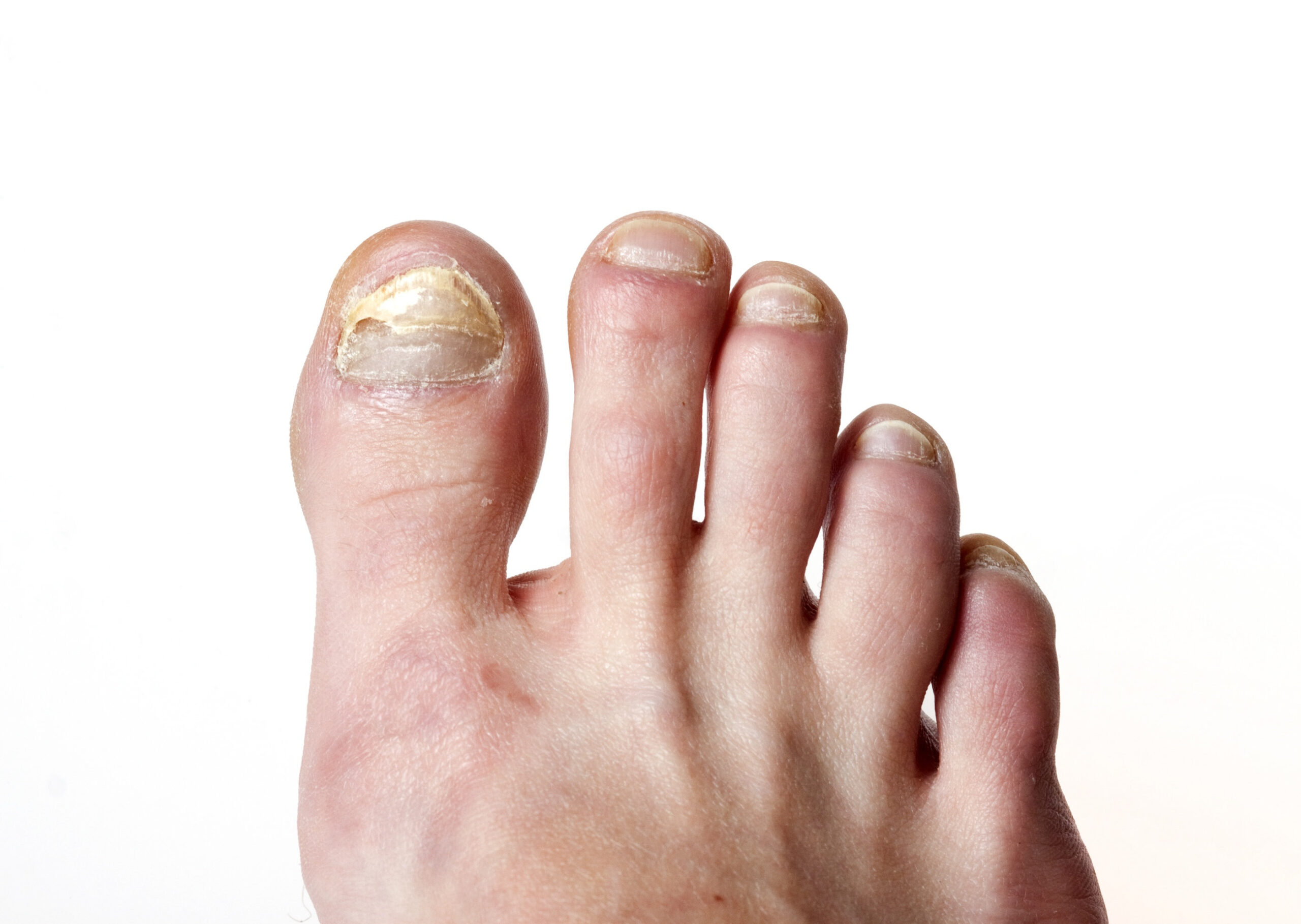TOENAIL FUNGUS
What is toenail fungus?
Toenail fungus is an infection underneath the surface of the nail caused by fungi. Fungal infections can make the toenails discolored and disfigured over time. Debris may collect beneath the nail plate and the infection is capable of spreading to other toenails and the skin. If ignored, the infection can spread and possibly impair your ability to walk. The resulting thicker nails are difficult to trim and make walking painful when wearing shoes. Toenail fungus can also be accompanied by a secondary bacterial or yeast infection in the nail plate.



What causes it?
Because it is difficult to avoid contact with microscopic organisms like fungi, the toenails are especially vulnerable around damp areas where you are likely to be walking barefoot, such as swimming pools, locker rooms, and showers, for example. Injury to the nail bed, even pressure from shoes, may make it more susceptible to all types of infection, including fungal infection. Those who suffer from chronic diseases, such as diabetes, circulatory problems, or immune-deficiency conditions, are especially prone to fungal nails. Other contributing factors may be a history of athlete’s foot and excessive perspiration. About 1 in 6 Americans has a fungal toenail infection.
What causes it?
Because it is difficult to avoid contact with microscopic organisms like fungi, the toenails are especially vulnerable around damp areas where you are likely to be walking barefoot, such as swimming pools, locker rooms, and showers, for example. Injury to the nail bed, even pressure from shoes, may make it more susceptible to all types of infection, including fungal infection. Those who suffer from chronic diseases, such as diabetes, circulatory problems, or immune-deficiency conditions, are especially prone to fungal nails. Other contributing factors may be a history of athlete’s foot and excessive perspiration. About 1 in 6 Americans has a fungal toenail infection.
Symptoms
Toenail fungus is often ignored because the infection can be present for years without causing any pain. The disease is characterized by a progressive change in a toenail’s quality and color, which is often ugly and embarrassing. Some of the symptoms can include:
- Thickening of the toenail
- Yellowing of the toenail
- Toenails become brittle and deformed
- White, chalky debris beneath the toenail
- Foul odor from the toenail
- Developing an ingrown toenail
- Tenderness or sensitivity surrounding the toenail
How we diagnose and the treatment options
Treatments may vary, depending on the nature and severity of the infection. We can perform lab tests to determine the cause and form a suitable treatment plan, which may include prescribing topical medication, oral medication, debridement (removal of diseased nail matter and debris) of an infected nail.
Prevention and Tips to combat toenail fungus:
- Wash your feet with soap and water, remembering to dry thoroughly.
- Wear shower shoes when possible in public areas.
- Change shoes, socks, or hosiery more than once daily.
- Clip toenails straight across so that the nail does not extend beyond the tip of the toe.
- Wear shoes that fit well and are made of materials that breathe.
- Wear socks made of synthetic fiber that “wicks” moisture away from your feet faster than cotton or wool socks do.
- Disinfect instruments used to cut nails.
- Don’t apply polish to nails suspected of infection (those that are discolored, for example).
- Treat athlete’s foot, if present.
Nail Restoration During Fungal Nail Treatment
Keryflex is a topical resin that is applied to the affected nail(s). It has a strong adhesive and dries under UV light within minutes. Keryflex looks and acts like a natural nail and gives the appearance of a clear and healthy nail. You are able to paint the nails and get pedicures as normal with Keryflex on your toes. Keryflex is an effective procedure that can give clear, healthy, and natural-looking toenails in just one visit. The whole procedure takes about 30 minutes from start to finish. There is no downtime, recovery, or any pain associated with the procedure. You can paint the nail as normal immediately following the procedure. This procedure will allow your toenails to look normal as they are being treated medically.
Watch our video for more information about Keryflex:
Toenail fungus. What is a toenail fungus? Well, it looks like a discolored (toenail), sometimes it’s yellow, sometimes it’s brown, sometimes it’s a white flaky toenail in appearance and sometimes they have cracks in them. They’ll be brittle when you trim them and crumble. It doesn’t look normal. The nail doesn’t look normal. The only way you would know if it’s an actual fungus, you actually have to send it to a lab to actually see if it will test positive for a fungus. But what causes it? Usually, the ideal environment for fungus to thrive is a shoe: dark, warm, moist environment. So, it’s very common in children and many people who just sweat a lot in their feet because that’s a moist environment. How you treat it is to get the moisture diminished. Whether that’s with the sock that wicks away the moisture, powder sprays, wear more sandals. Many people use over the counter treatments, whether they are solutions, and powders, and creams. All of these will help! But if you have more than one nail, or sometimes even if that one nail is totally destroyed, you need to see a specialist! See a podiatrist. Where we will send the specimen to the lab, find out if it’s indeed a fungus, because it will spread. It will spread to all your other toenails and then all your nails will look like that one. So, in order to keep toenail fungus a thing of the past, see a specialist. See us here at Trinity Foot Center, where we will send the specimen to the lab and then start you on a treatment regime, so that when you’re out there this spring and summer, you’re in your sandals. You don’t have to be embarrassed and cover it with a fake toenail or polish them and we get that a lot. So, if you have a toenail fungus, seek a podiatrist, see a specialist, get it handled.
Contact us
Office Hours
| Monday | 8:00am - 4:30pm |
| Tuesday | 8:00am - 4:30pm |
| Wednesday | 8:00am - 4:30pm |
| Thursday | 8:00am - 5:30pm |
| Friday | 8:00am - Noon |
Contact
p. (972) 293-9650
f. (972) 291-2533
Location
1801 N. Hampton Road
Suite 340
DeSoto, TX 75115
Inside the Inwood National Bank Building on the 3rd Floor
Request appointment
© Trinity Foot Center. All Rights Reserved. | Privacy Policy
